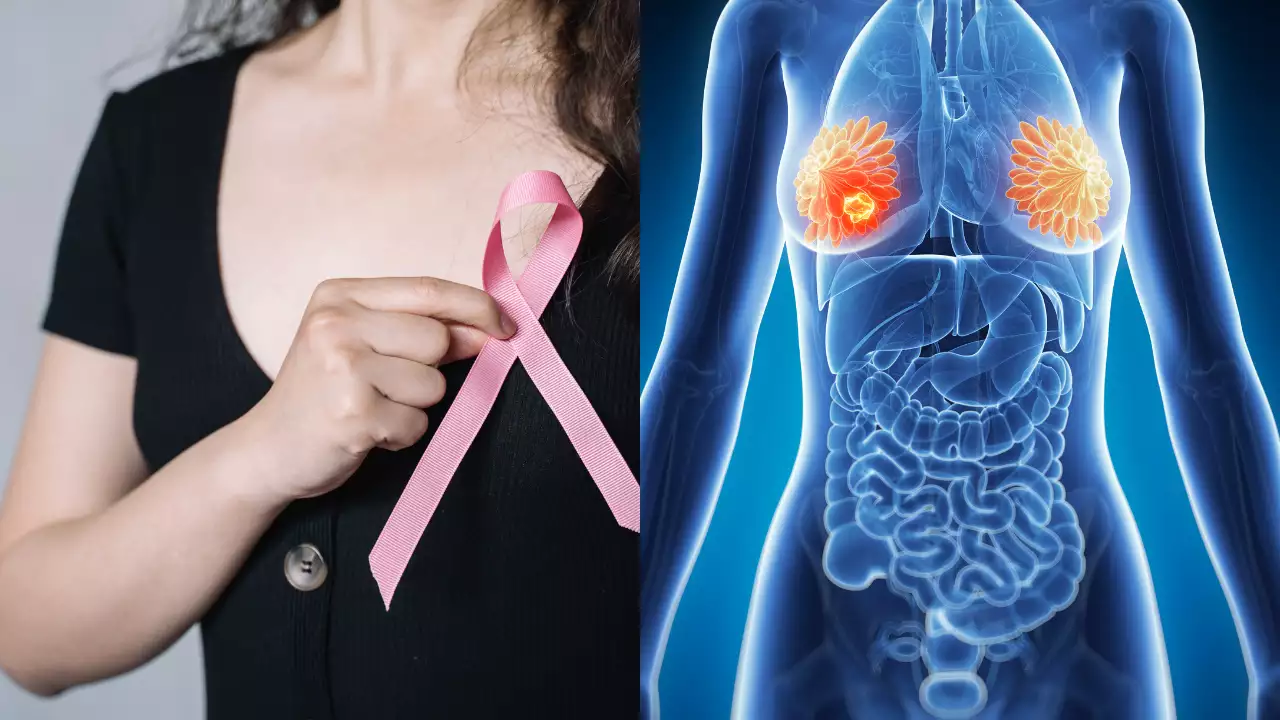Supriya Ramesh • 27 Mar 2025
Breast Self-Exam: Your First Line of Defense in Catching Cancer Early; Experts Weigh In

Image - Canva
Breast cancer is one of the most prevalent cancers among women, accounting for 626,679 deaths globally in 2018. While advancements in treatment have improved survival rates, late-stage breast cancer remains challenging to treat. Catching the disease early—before it spreads beyond the breast—significantly improves the chances of successful treatment.
Regular screenings, such as mammograms, play a crucial role in reducing mortality rates. Additionally, factors such as genetics, lifestyle, and environmental exposures contribute to an individual’s risk of developing the disease. Ongoing research continues to pave the way for more personalised and effective treatments, including targeted therapies and immunotherapies, which are showing promising results in clinical trials.
The Importance of Early Detection
According to the Cancer Society, the five-year relative survival rate for breast cancer detected in its localised stage is as high as 99%. Early detection includes a combination of breast self-examinations, clinical breast exams, and routine mammograms.
Dr. Pratik Patil, Consultant Oncologist at Jupiter Hospital Pune, stresses the need for awareness of early warning signs. “Women who have breast cancer may experience symptoms such as a change in breast skin, like dimpling or redness. They may also notice a lump or swelling in the breast, chest, or armpit. Other signs include a rash on the nipple that resembles eczema, an inverted nipple, and persistent discomfort in the armpit or breast. However, occasional breast pain is typically not a sign of breast cancer.”
Women should begin annual mammograms at age 40, or earlier if they have a family history of breast cancer. It is also essential to recognise symptoms such as a new lump in the breast or underarm, bloody nipple discharge, and changes in breast skin or appearance. While these symptoms may not always indicate cancer, they require medical evaluation.
Breast Self-Examination: A Critical Step
Dr Patil advises that breast self-examination (BSE) is a vital tool for women to familiarise themselves with their breast tissue and detect any abnormalities. He recommends the following steps:
• Stand in front of a mirror and check for puckering, dimpling, or changes in size, shape, or symmetry.
• Observe whether the nipples are inverted and inspect the breasts with hands pressed against the hips.
• Raise the arms above the head and press the palms together to check for irregularities.
• Lift the breasts to see if the ridges at the bottom are symmetrical.
While self-examinations should not replace regular medical screenings, they are an important supplementary tool for early detection.
Breast Cancer Screening and Diagnosis
Dr Aakaar Kapoor, CEO and Lead Medical Advisor at City X-Ray, points out the role of screening in early breast cancer detection. “Breast cancer screening is crucial for early detection, often before any symptoms appear. Mammography, professional breast examinations, and breast self-exams are the three most commonly used screening methods. Regular screening increases the chances of catching breast cancer early when treatment is most effective.”
Mammography remains the gold standard for breast cancer screening. Traditional mammograms capture two images of the breast, while 3D mammography (breast tomosynthesis) provides multiple images from different angles, making it more effective in detecting hidden tumours. Women at high risk—such as those with dense breast tissue—may also undergo breast MRI alongside mammograms for enhanced detection.
Treatment Approaches for Breast Cancer
The treatment of breast cancer depends on its type and stage. According to Dr Patil, “Breast cancer is classified into many categories, each with its own clinical features and therapeutic choices. A personalised treatment plan ensures better outcomes.”
Treatment options include:
• Surgery: A lumpectomy (removal of the tumour) or mastectomy (removal of the breast) is recommended for early-stage breast cancer. However, surgery is generally not an option for advanced-stage cancer that has spread.
• Radiation therapy: Used after surgery to destroy remaining cancer cells.
• Chemotherapy: Often given before surgery to shrink tumours or after surgery to eliminate residual cancer cells. For cancers beyond stage 1, chemotherapy followed by surgery remains the gold standard.
• Hormone therapy: Targets hormone-sensitive cancers by blocking the effects of oestrogen or progesterone.
• Targeted therapy and immunotherapy: These newer treatments focus on attacking specific cancer cells while sparing healthy ones. They are particularly effective for certain breast cancer subtypes.
Get Latest News Live on Times Now along with Breaking News and Top Headlines from Health and around the world.